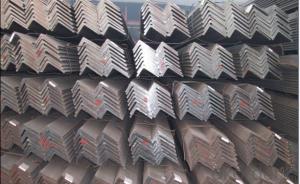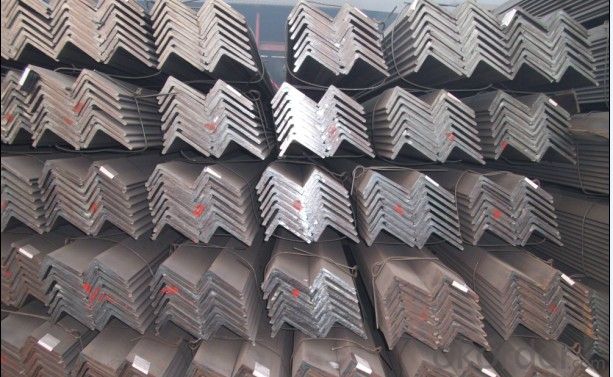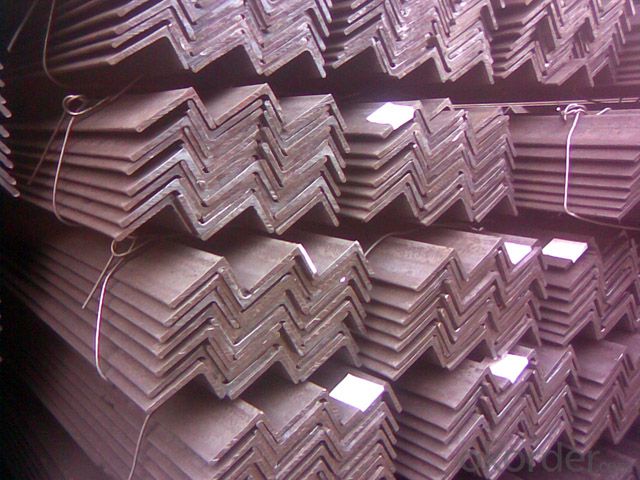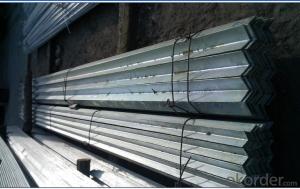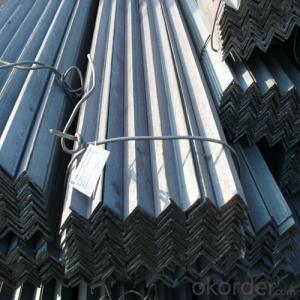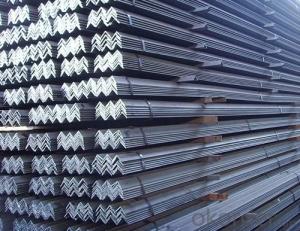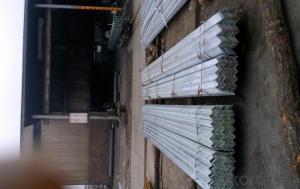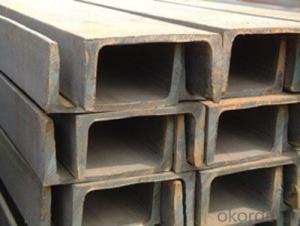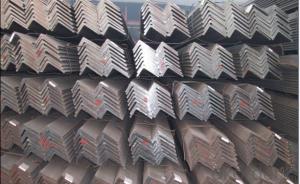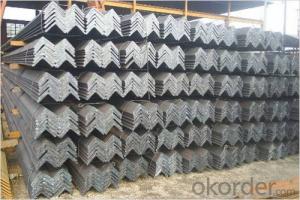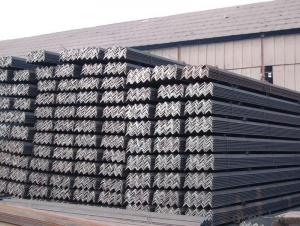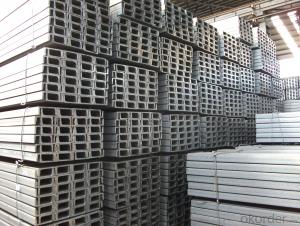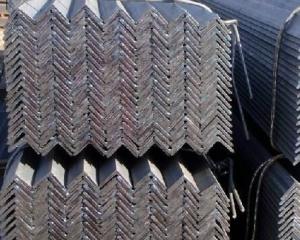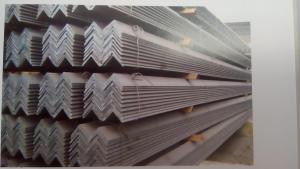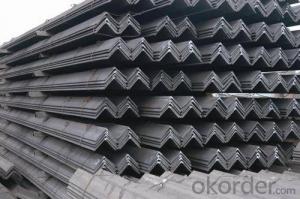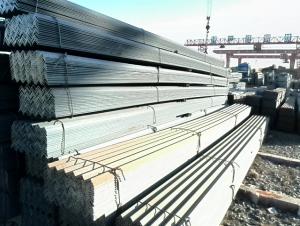Unequal Angle Steel HR Q235-420Series, SS400-540Series, S235JR-S355JR, A36-A992
- Loading Port:
- Tianjin
- Payment Terms:
- TT or LC
- Min Order Qty:
- 30 m.t.
- Supply Capability:
- 38000 m.t./month
OKorder Service Pledge
OKorder Financial Service
You Might Also Like
Product Description:
OKorder is offeringUnequal Angle Steel HR Q235-420Series, SS400-540Series, S235JR-S355JR, A36-A992at great prices with worldwide shipping. Our supplier is a world-class manufacturer of steel, with our products utilized the world over. OKorder annually supplies products to European, North American and Asian markets. We provide quotations within 24 hours of receiving an inquiry and guarantee competitive prices.
Product Applications:
Unequal Angle Steel HR Q235-420Series, SS400-540Series, S235JR-S355JR, A36-A992 are ideal for structural applications and are widely used in the construction of buildings and bridges, and the manufacturing, petrochemical, and transportation industries.
Product Advantages:
OKorder'sUnequal Angle Steel HR Q235-420Series, SS400-540Series, S235JR-S355JR, A36-A992are durable, strong, and resist corrosion.
Main Product Features:
· Premium quality
· Prompt delivery & seaworthy packing (30 days after receiving deposit)
· Corrosion resistance
· Can be recycled and reused
· Mill test certification
· Professional Service
· Competitive pricing
Packaging & Delivery:
Packaging Detail: products are packed in bundle and then shipped by container or bulk vessel, deformed bar is usually naked strapping delivery, when storing, please pay attention to moisture proof. The performance of rust will produce adverse effect.
Each bundle weight: 2-3MT, or as required
Payment term: TT or L/C
Delivery Detail: within 45 days after received advanced payment or LC.
Label: to be specified by customer, generally, each bundle has 1-2 labels
Trade terms: FOB, CFR, CIF
FAQ:
Q1: Why buy Materials & Equipment from OKorder.com?
A1: All products offered byOKorder.com are carefully selected from China's most reliable manufacturing enterprises. Through its ISO certifications, OKorder.com adheres to the highest standards and a commitment to supply chain safety and customer satisfaction.
Q2: How do we guarantee the quality of our products?
A2: We have established an advanced quality management system which conducts strict quality tests at every step, from raw materials to the final product. At the same time, we provide extensive follow-up service assurances as required.
Q3: How soon can we receive the product after purchase?
A3: Within three days of placing an order, we will begin production. The specific shipping date is dependent upon international and government factors, but is typically 7 to 10 workdays.
Images:
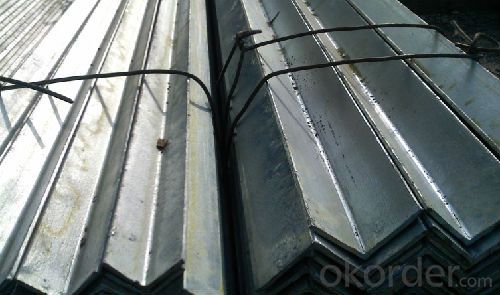
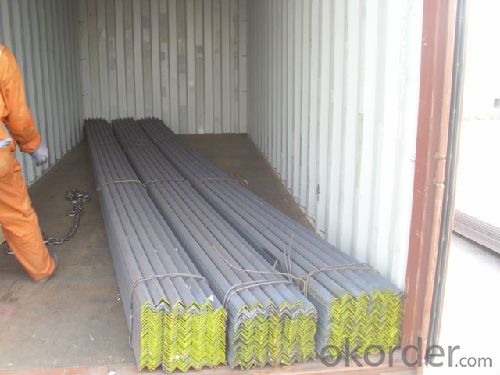
- Q: Can steel angles be used in solar panel mounting systems?
- Yes, steel angles can be used in solar panel mounting systems. Steel angles are often chosen for their strength, durability, and stability, making them suitable for supporting the weight of solar panels. They can be easily fabricated and customized to fit specific project requirements. Additionally, steel angles provide a stable base for solar panels, ensuring proper alignment and reducing the risk of damage due to wind or other external factors. However, it is important to consider the specific requirements of the solar panel system and consult with a structural engineer or a professional installer to ensure that the chosen steel angles meet the necessary load-bearing capacity and structural integrity standards.
- Q: What are the different design considerations for steel angles in industrial buildings?
- Some of the key design considerations for steel angles in industrial buildings include the load-bearing capacity of the angles, the overall structural stability, the desired level of durability and resistance to corrosion, and the aesthetic appearance of the angles. Additionally, factors such as the specific application and function of the angles, the environmental conditions, and the available budget also play a role in determining the design considerations for steel angles in industrial buildings.
- Q: Can steel angles be used as supports for HVAC systems or ductwork?
- Yes, steel angles can be used as supports for HVAC systems or ductwork. Steel angles are commonly used in construction and engineering projects due to their strength and durability. They can provide a stable and secure support structure for HVAC systems or ductwork, ensuring that they are properly installed and can withstand the weight and vibrations associated with their operation. Steel angles can be easily fabricated and installed, making them a cost-effective and efficient solution for supporting HVAC systems or ductwork.
- Q: What is the maximum deflection allowed for a steel angle beam?
- The maximum deflection allowed for a steel angle beam depends on various factors such as the specific design requirements, the load applied, and the length of the beam. Generally, the maximum deflection allowed for a steel angle beam is determined by industry standards and codes, which ensure the structural integrity and safety of the beam. These standards take into consideration factors such as the material properties, section dimensions, and the intended use of the beam. To determine the maximum deflection allowed, engineers typically refer to specifications such as the American Institute of Steel Construction (AISC) Manual of Steel Construction or the Eurocode for Structural Design. These codes provide guidelines and equations to calculate the maximum allowable deflection based on the beam's characteristics and the applied load. It's important to note that the maximum deflection allowed for a steel angle beam is not a fixed value, but rather a limit that ensures the beam can withstand its intended use without compromising its structural integrity. Therefore, it's crucial to consult the appropriate design codes and work with a qualified structural engineer to determine the specific maximum deflection allowed for a particular steel angle beam in a given application.
- Q: Can steel angles be used in solar panel installations?
- Yes, steel angles can be used in solar panel installations. They provide structural support and can be used to mount solar panels on roofs or other surfaces.
- Q: How do steel angles contribute to the seismic resilience of a structure?
- Steel angles contribute to the seismic resilience of a structure by providing structural stability and strength. These angles are commonly used as bracing elements to reinforce the connections between different components of the building, such as beams and columns. By distributing and dissipating seismic forces, steel angles help to reduce the impact of earthquakes on the structure. They enhance the overall stiffness and rigidity of the building, preventing excessive deformation and potential collapse during seismic events. Additionally, steel angles can act as energy-absorbing devices, absorbing and dissipating seismic energy, thereby improving the seismic performance and resilience of the structure.
- Q: What is the minimum thickness for a steel angle bracket?
- The minimum thickness of a steel angle bracket depends on its specific application and the load it is meant to bear. Typically, a thickness of 1/8 inch (3.175 mm) is commonly employed for angle brackets, providing ample strength and rigidity to withstand normal loads and forces. However, it is crucial to bear in mind that for heavier loads or specialized uses, thicker steel brackets may be necessary to guarantee structural integrity and safety. It is advisable to seek the advice of a structural engineer or adhere to industry standards and guidelines to ascertain the suitable minimum thickness for a steel angle bracket in a particular application.
- Q: Can steel angles be used in HVAC ductwork?
- Yes, steel angles can be used in HVAC ductwork. Steel angles are commonly used in ductwork to provide structural support and reinforcement. They are typically used at corners and joints to strengthen the ductwork and maintain its shape. Steel angles are durable, strong, and resistant to corrosion, making them suitable for use in HVAC ductwork systems. Additionally, steel angles can be easily welded or fastened together, allowing for easy installation and customization. Overall, steel angles are a reliable and commonly used component in HVAC ductwork systems.
- Q: What are the different types of steel angles used in machinery?
- There are several types of steel angles commonly used in machinery, including equal angles, unequal angles, L-shaped angles, and T-shaped angles. These angles are used to provide structural support, reinforce joints, and facilitate the assembly of various components in machinery.
- Q: What are the considerations for selecting the appropriate steel angle thickness?
- There are several considerations for selecting the appropriate steel angle thickness. Firstly, the load-bearing capacity of the steel angle must be taken into account. The thickness should be chosen based on the expected weight and stress that will be placed on the angle. Additionally, the length and span of the angle should be considered, as longer and wider spans may require thicker steel angles to provide adequate support. Environmental factors, such as exposure to corrosive substances or extreme temperatures, should also be evaluated to select a thickness that can withstand these conditions. Finally, budget constraints and cost-effectiveness may influence the choice of steel angle thickness, as thicker angles are generally more expensive.
Send your message to us
Unequal Angle Steel HR Q235-420Series, SS400-540Series, S235JR-S355JR, A36-A992
- Loading Port:
- Tianjin
- Payment Terms:
- TT or LC
- Min Order Qty:
- 30 m.t.
- Supply Capability:
- 38000 m.t./month
OKorder Service Pledge
OKorder Financial Service
Similar products
Hot products
Hot Searches
Related keywords
